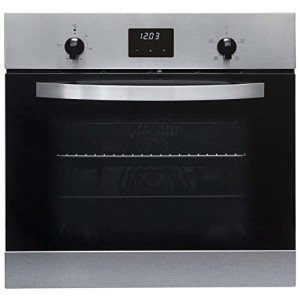The Essential Guide to Oven Hobs: Selecting the Right One for Your Kitchen
When it comes to home cooking, couple of home appliances are as vital as the oven hob. This versatile tool is important for a variety of cooking methods-- boiling, frying, simmering, and sautéing. Given the myriad of alternatives offered on the marketplace, selecting the perfect oven hob for one's kitchen can be intimidating. This post intends to offer an in-depth appearance at oven hobs, discussing their types, functionalities, advantages, drawbacks, and essential considerations when buying one.
Comprehending Oven Hobs
Oven hobs, commonly known as cooktops, are flat cooking platforms that feature burners or heating aspects. They can be integrated with an oven or stand-alone. The option of an oven hob can considerably impact cooking performance and convenience.
Types of Oven Hobs
Oven hobs can be found in various types, each with unique functions. Below are the most common types available:
| Type | Description | Advantages | Drawbacks |
|---|---|---|---|
| Gas Hobs | Utilizes natural gas or gas | Immediate heat and exact temperature control; works well with all pots and pans | Needs a gas connection; less energy-efficient than electric |
| Electric Hobs | Usage electric coils or glowing heat | Easy to clean; consistent heat circulation | Slower to warm up; can be less responsive than gas |
| Induction Hobs | Uses magnetic fields to heat cookware directly | Quick cooking; energy-efficient; simple to tidy | Requires suitable cookware; typically more pricey |
| Ceramic Hobs | Flat glass-ceramic surface with glowing heat | Aesthetically pleasing; easy to tidy | Can be vulnerable to scratching; slower to heat than induction |
Secret Features of Oven Hobs
When selecting an oven hob, several functions ought to be taken into account:
- Size & & Configuration: Available in various sizes, oven hobs can accommodate several pots and pans. Basic choices are typically 30, 36, or 48 inches wide.
- Power Output: Look for hobs with differing power levels for various cooking procedures. High-powered burners are excellent for boiling, while lower-power ones can be used for simmering.
- Control Types: Choose in between knob controls and touch controls. Knobs provide tactile feedback, while touch controls provide sleek styles and additional functionalities.
- Safety Features: Options like automated shut-off, child locks, and flame failure gadgets are important for avoiding mishaps.
- Relieve of Cleaning: Choose models with smooth surfaces or detachable parts for easy upkeep.
Advantages and Disadvantages
Understanding the benefits and drawbacks of different oven hobs can help in making an informed choice.
Benefits
- Adaptability: Suitable for numerous cooking approaches, from boiling to frying.
- Speed: Many hobs heat quickly, specifically induction designs.
- Energy Efficiency: Some choices, like induction hobs, can decrease energy intake compared to standard approaches.
Drawbacks
- Cost: High-end designs, especially induction hobs, can be pricey.
- Setup: Gas hobs need professional installation and a gas supply, which may incur extra costs.
- Compatibility: Not all pots and pans deals with induction hobs, demanding additional purchases.
Buying Considerations
When picking an oven hob, consider the following factors:
- Cooking Style: Assess how frequently and what kind of cooking you do to determine the best hob type.
- Kitchen Layout: Measure your kitchen area to ensure the hob fits and matches other home appliances.
- Budget: Determine just how much you want to spend. Aspect in setup and the cost of any necessary cookware.
- Energy Source: Evaluate the accessibility of natural gas or the electrical capacity of your kitchen to choose in between gas and electric options.
Frequently Asked Questions About Oven Hobs
Q1: What is the distinction in between a cooktop and an oven hob?A cooktop and an oven hob generally refer to the exact same home appliance. However,"cooktop "is a broader term that consists of both standalone hobs and integrated units with ovens. Q2: Can I use any cookware on an induction
hob?No, induction hobs need ferrous( magnetic)cookware
to work. Pots and pans made of product like stainless-steel or cast iron appropriates, while aluminum and copper without magnetic homes are not. Q3: How do I clean my oven hob properly?Cleaning approaches depend on the kind of hob.
Normally, a wet cloth and mild detergent work for glass-ceramic surface areas, while a particular hob cleaner is perfect for induction. Gas hobs need taking apart burners for extensive cleaning. Q4: Are induction hobs safe for cooking?Yes, induction hobs are typically safer than gas hobs as they do not produce an open flame,and the surface cools off rapidly. The majority of models also feature kid safety locks. Q5: How often should I change my oven hob? Ovens And Hobs of an oven hob varies based on the type and usage. Normally, they last around 10 to 15 years.
Regular upkeep can help extend this period. Choosing the best oven hob for your home can considerably improve your cooking experience. With a comprehensive understanding of the types, functions, benefits, and considerations, anybody can make an educated choice. From the high heat of gas to the performance of induction, there is a hob matched to every cooking requirement. Eventually, the ideal oven hob can transform cooking from a mundane task into an art form, enabling culinary enthusiasts to develop scrumptious meals with ease.

